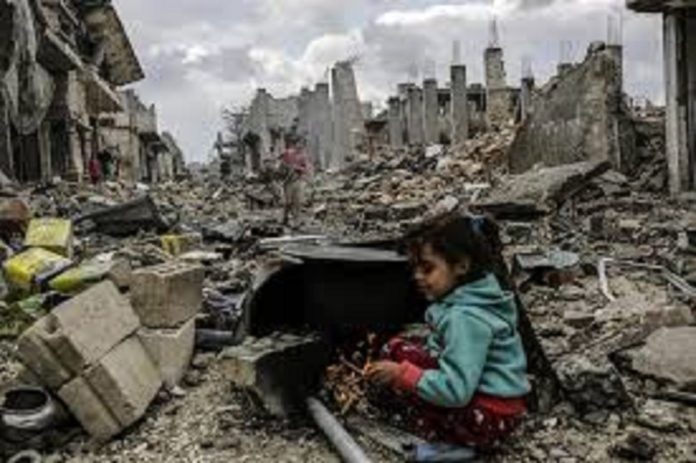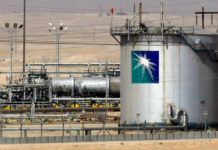Seven years have passed since the beginning of the Syrian hell with no peace settlement in the horizons, a period through which 18 million people lives were negatively affected either by death, displacement, asylum, terrorism or crime. In this article we tackle, the impact of the war on the economy and assess the damage of this war.
Syrian infrastructure
Losses in the Syrian infrastructure alone are estimated at $ 226 billion, according to a World Bank study, which means 4 times the total size of the economy itself, some studies believe these costs after updating it to the current international prices of raw materials, and construction may rise to the $ 400 billion.
• $ 1.3 trillion are the costs for reconstruction (including construction of the destroyed infrastructure) and returning only to the infrastructure status in 2010.
• Syria needs 25 years in addition to the financial resources mentioned above to rebuild its infrastructure.
* Slightly over 10% of the infrastructure currently operational, along with less than a quarter of its production capacity, mostly in the capital and some other pro-government areas.
Exchange rate
The Syrian currency fell from 50 Lira to the dollar in 2010 to 500 Lira, reflecting about 1000% losses.
Currency decline is either negative to catastrophic or positive to beneficial.
In the case of Turkey the decline in currency is negative as the government does not aim to reduce its currency for an economic purpose, but is working to raise it using its economic and financial tools to manage the process, verses the case of Egypt, which declared a strong reform program to stimulate growth, export, tourism and investment with its main pillar floating the currency and reducing its value significantly, while setting its monetary and economic tools to contain the impacts of reform, and finally the case of China who deliberately declines its currency as it is beneficial to increasing its exports and accordingly its market and economic development, specially in its battle to increase its exports to the US in Europe by their bitter competitive pricing and quality.
Sadly the case of Syria, a 1000% collapse in the value of the currency that impacts prices of basic goods and services, is catastrophic, because the situation here is a state of civil war and chaos and the government can no longer control the exchange rate.
Foreign currency resources
Syria’s returns from Tourism and Foreign Investments revenue reached about $ 20 billion annually prior to the crisis. Currently, Both sectors dropped to zero and sometimes negative, due to the cases of liquidation and market exit.
Inflation and commodity prices
Inflation in Syria in 2010 was stable at the range of 4%. In 2013 inflation reached 120% at an average of 50% per month since the beginning of the crisis in 2011.
It is to be noted that Egypt’s economic reform program lead inflation to its highest peek in history to 35%, which has regressed to nearly 14% in February 2018 and expected to keep improving along 2018.
Public services and utilities
Internet services, electricity, water, sewage, utilities, education and health are nearly devastated devastated. These services will only be found in the capital and a few cities in Syria. Followed are some of the latest statistics:
* 27% of the property either demolished or significantly damaged.
* 50% of the medical facilities have been demolished or non-operational.
* 3 out of every 4 Syrians do not study or work (which raises the possibility of joining sides within this armed conflict)
* The number of Syrians dead due to lack of health services is higher than the number of people killed in this war.
The regional economic impact of the Syrian crisis
The Syrian refugee crisis has lead to the destruction of the Syrian economy. It has brain drained the country of its capable human resources, liquidation of businesses, withdrawing of foreign currency and fleeing abroad, which has all consequently lead to the disastrous consequences of a deteriorating financial and monetary system in the state.
The problem of refugees, also lead to a negative impact to the neighboring economies, Lebanon and Jordan. These two countries have their sufficient internal economic problems, yet, had to bear the burden of the civil war in the form of millions of people who suddenly appeared on the border, requiring asylum, and need housing, employment, facilities, as well as, health and education services.
Jordan and Lebanon have made heroic effort in their stand to serve the crisis and deserve international solidarity with them to enhance their ability to bear the burden, but unfortunately, international support is not at the required level, and financial resources provided to the governments of Amman and Beirut does not meet the requirements of this humanitarian tragedy.
Black market for everything
Due to the reduction of imports, and domestic production declining, goods and commodities availability in the market started to be scarce. Further more, as prices hiked with scarcity of products continuing, naturally, a black market developed that feeding as a parasite over this burdened economy and its people.
Heating costs and oil production
The Syrian families rich or poor need to set aside a budget for heating due to the country’s harsh winters, which is a necessity rather than a luxury. But heating needs oil products both locally produced or imported; this brings us to discuss the Syrian oil production and resources.
Syrian production of oil
Prior to the crisis Syria was an oil-producing country, with a small part imported to cover its requirements.
Syria also has gas and oil reserves that need development, investment and exploration, yet, due to the war, all the foreign companies pulled out, further more, when Daeesh (before their fall) seized some of Syria’s wells they have sold it illegally through the Turkish boarders.
Syria’s Oil export revenues dropped from $ 4.7 billion in 2010 to only $ 140 million in 2014, which is practically loosing over 3300% of its resources from this sector.
On the other hand, for Syria to import it will need foreign financial resources to accommodate for this growing difference and theft of energy resources, which brings us to the country’s foreign reserves.
10- Cash reserve in Syria
Syrian cash reserves fell from $ 20 billion in 2010 to only $ 400 million in 2016, reflecting a serious dilemma in financing any of the country’s requirements.
In conclusion
Syria's financial and monetary institutions have regressed more than 100 years since the war started, what happened there is not just an ongoing humanitarian crisis, it is developing into the decade’s catastrophe.
I cannot conclude this report with an unrealistic expectation based on these figures, yet I sincerely hope for Syrians to amend their path towards peace, agreement and collaboration with all national forces.















